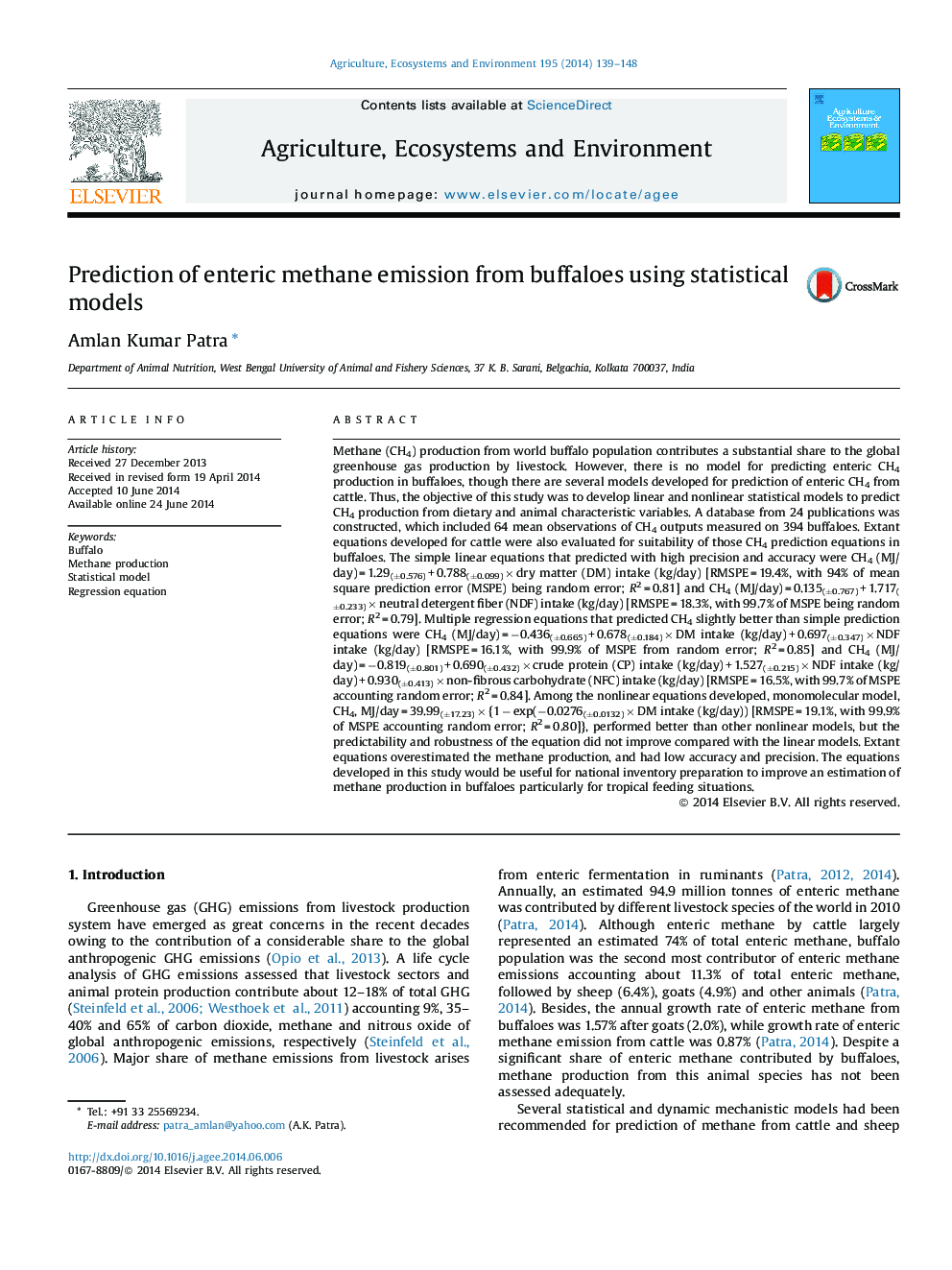| کد مقاله | کد نشریه | سال انتشار | مقاله انگلیسی | نسخه تمام متن |
|---|---|---|---|---|
| 2413917 | 1552057 | 2014 | 10 صفحه PDF | دانلود رایگان |
• Statistical models predicted methane emission from buffaloes with precision and accuracy.
• Extant models developed for cattle overestimated the methane production, and had low goodness of fit.
• New models would be useful for national inventory preparation to improve an estimation of methane production in buffaloes.
Methane (CH4) production from world buffalo population contributes a substantial share to the global greenhouse gas production by livestock. However, there is no model for predicting enteric CH4 production in buffaloes, though there are several models developed for prediction of enteric CH4 from cattle. Thus, the objective of this study was to develop linear and nonlinear statistical models to predict CH4 production from dietary and animal characteristic variables. A database from 24 publications was constructed, which included 64 mean observations of CH4 outputs measured on 394 buffaloes. Extant equations developed for cattle were also evaluated for suitability of those CH4 prediction equations in buffaloes. The simple linear equations that predicted with high precision and accuracy were CH4 (MJ/day) = 1.29(±0.576) + 0.788(±0.099) × dry matter (DM) intake (kg/day) [RMSPE = 19.4%, with 94% of mean square prediction error (MSPE) being random error; R2 = 0.81] and CH4 (MJ/day) = 0.135(±0.767) + 1.717(±0.233) × neutral detergent fiber (NDF) intake (kg/day) [RMSPE = 18.3%, with 99.7% of MSPE being random error; R2 = 0.79]. Multiple regression equations that predicted CH4 slightly better than simple prediction equations were CH4 (MJ/day) = −0.436(±0.665) + 0.678(±0.184) × DM intake (kg/day) + 0.697(±0.347) × NDF intake (kg/day) [RMSPE = 16.1%, with 99.9% of MSPE from random error; R2 = 0.85] and CH4 (MJ/day) = −0.819(±0.801) + 0.690(±0.432) × crude protein (CP) intake (kg/day) + 1.527(±0.215) × NDF intake (kg/day) + 0.930(±0.413) × non-fibrous carbohydrate (NFC) intake (kg/day) [RMSPE = 16.5%, with 99.7% of MSPE accounting random error; R2 = 0.84]. Among the nonlinear equations developed, monomolecular model, CH4, MJ/day = 39.99(±17.23) × {1 − exp(−0.0276(±0.0132) × DM intake (kg/day)) [RMSPE = 19.1%, with 99.9% of MSPE accounting random error; R2 = 0.80]}, performed better than other nonlinear models, but the predictability and robustness of the equation did not improve compared with the linear models. Extant equations overestimated the methane production, and had low accuracy and precision. The equations developed in this study would be useful for national inventory preparation to improve an estimation of methane production in buffaloes particularly for tropical feeding situations.
Figure optionsDownload as PowerPoint slide
Journal: Agriculture, Ecosystems & Environment - Volume 195, 1 October 2014, Pages 139–148
